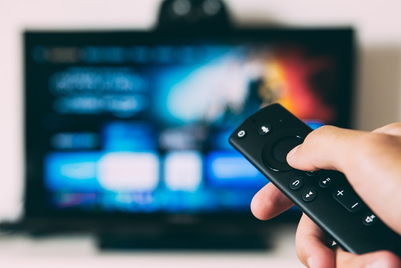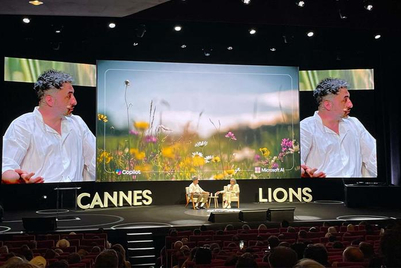The ad landscape in news too, has evolved significantly with the rise of digital media. Traditional print and broadcast models have shifted towards online platforms, offering more targeted advertising opportunities, data-driven insights, and personalised content for users. This transformation has brought about challenges and opportunities for news organisations in generating revenue, while adapting to changing consumer behaviours.
No one knows this more than CNN (Cable News Network). The globally-renowned news outlet has expanded its in recent years through diversifying its television broadcasts, digital platforms, and partnerships. This growth has allowed CNN to provide comprehensive and timely news coverage to audiences across not just the world, but also in Asia, contributing to its influence and reputation in the region.
Faisal Karmali, vice president—Digital Business Operations, CNN International Commercial (CNNIC), is in charge of the commercial technology for the group, and has been so for the last seven years.
During his tenure, keeping CNN's 'audience-first' strategy in mind, the news major has been using AI and other technology available to enhance its recommendation engine to keep the consumer glued to the site, as well as to track them as they look to serve the right ads to the right person.
We caught up with him to learn more about how the newsgroup goes about its commercial offerings, the role of technology and AI in a newsroom, why branded content is sometimes frowned upon, and more.
Below are the edited excerpts from Campaign's comprehensive chat:
You've been with CNN for seven years now. How has the group evolved?
CNN International Commercial (CNNIC) was formed in 2013, as a distinctive unit to run international business operations with a focus outside of the USA.
From a product and commercial product perspective [during that time], we have evolved the way we approach the market—whether it’s through content recommendations or commercial products. We are running an audience-first strategy and have made sure that’s central across all platforms.
Now, the group has to reach a much more diverse set of platforms and we have to make sure we’re audience-first across them too.
Could you shed some more light on the audience-first approach?
The news industry as a whole has a diverse spread of subjects within that. We want to make sure we recommend the right content to the right user with the right context.
The attention metrics that have developed in the industry have taken over and are key to how we develop our products and recommendations and develop our commercial strategy. It’s about how we ensure that the news or the next article is of interest to the user.
While you’re using a fair amount of tech for the recommendations and programmatic, we’re seeing newsrooms in India [and other Asian countries] using technology to get AI anchors among others. Is CNN also looking at this and what’s your take on the same?
AI is quite a broad term right now and the first thing I’d say is: AI doesn’t affect our journalism at all.
But, it powers what I was talking about in terms of content recommendations. It’s also used as an efficiency tool within our creative process whether that’s translation or editing. Even then, we have a human element with that.
Journalism has to be trusted and having that relationship with the user is important. It’s more important to have trusted news sources so that people can turn to a real journalistic, trusted, written pieces of content or video.
Other than AI, what are the big technology changes we are seeing in this space and that are being used by CNN?
The audience-first strategy I talked about relies on us having that relationship with the users, coming to know about them and placing them in cohorts. There’s no personally-identified information being used to create profiles.
We have a product called CNN Aim (Audience Insight Measurement) through which we are quite transparent about how we build our audience and segments with our clients. It’s made up of lots of different pieces of technology.
We have a contextual engine for brand suitability called CEP which we also use with the likes of Apple to remove the use of cookies. It’s a powerful tool for us to still find the subject matter to target with.
In terms of other technologies, the one thing we’ve focused on with the use of cookies going away is our first-party data and the spine we have within CNN. We see this within Warner Bros Discovery as well, there’s a lot of valuable insight within the company. Whether that’s on our owned and operated sites or whether it’s on social media with our platform Launchpad, we have a lot of insights—the technology sits on top of that but that underpins everything we do.
In terms of how your digital model works, are you looking at the paid subscription model too?
Our content on our CNN website is free. We keep talking about different distribution models and part of that’s FAST (curated channel of short-form videos) and we distribute that on a lot of channels. We also have streaming and CNN is streamed across the USA with the Max consumer products.
These are all different distribution paths. But the website doesn’t have any paywall and we want to make sure we take our good journalism and make it accessible to as many people who want it.
When it comes to news, along with traditional websites, there's also competition from social media. In India particularly, we are seeing former journalists taking to the likes of YouTube to get the news out. How can the news portals keep their audiences?
For this, we have to understand our audiences well and do that across all platforms. Social is a big platform for us to reach out through our news. Our core users come to our owned and operated platforms, and with our news cycle, we also get a lot of users coming to us directly.
We have our audience insights to look at how we can distribute our content. We are making sure we are on as many platforms as we can because our news is a trusted voice in a trusted environment. I think there will always be a space for this and more so as the social landscape gets a little cluttered.
There will always be space for well-trusted news content.
How big is the Indian market for CNN? Where does it rank among global markets?
We are a truly global news brand and India is an extremely important region for us. We have a huge audience as well and it comes from the fact that we are a trusted brand and we hope that continues. Our digital footprint in Asia is significant and India is a key growth market.
The APAC region as a whole is very developed and we have bureaus there. We just need to make sure that the region continues to grow and we are there with it as when we grow.
We have seen a few markets in Europe showing key interest in what we do and they’re not necessarily English-language markets. We are crossing language boundaries there and people are still coming to us to consume news.
When it comes to advertisers, what categories do we see spending most on CNN globally and in India?
In the Indian market, finance leads. But we also see sustainability becoming a huge topic and we’re seeing that with our advertisers as well and so we have programming around that. We have to make sure that sustainability is represented properly, especially being a global news brand.
We want to represent every subject matter properly and the (commercial) opportunities will come after. We work with tourism boards too and they are a category of interest.
We're assuming CNN would also be doing a lot of branded content?
One of the developments we’ve had over the years is the launch of CNN Create (CNN International's global in-house brand studio, featuring writers, designers and filmmakers specialising in human storytelling). It’s very much central to anything we do.
Do you think branded content on news channels/websites is sort-of frowned upon?
That’s the case with any piece of advertising. I can’t change people’s minds and that’s their prerogative but I don’t think it’s negative. It’s a very valid way of getting across a client’s messaging with a tone of voice that’s trusted by our viewers and readers.
There may have been some instances in the industry where they may not have been labelled clearly and that’s potentially where the view has come from.



.jpg&h=334&w=500&q=100&v=20250320&c=1)



.png&h=334&w=500&q=100&v=20250320&c=1)



.png&h=334&w=500&q=100&v=20250320&c=1)

.png&h=268&w=401&q=100&v=20250320&c=1)



.png&h=268&w=401&q=100&v=20250320&c=1)
.png&h=268&w=401&q=100&v=20250320&c=1)

